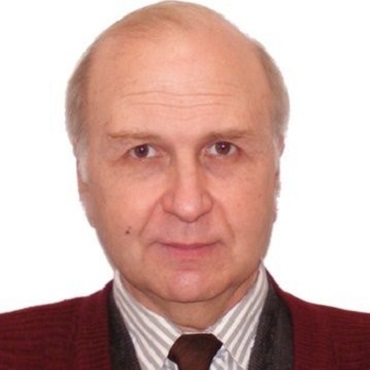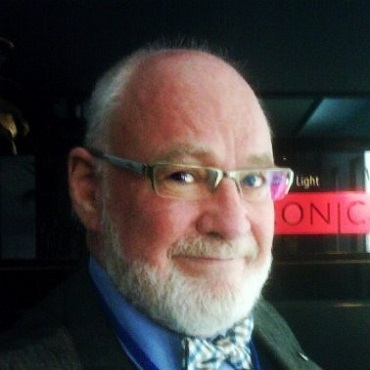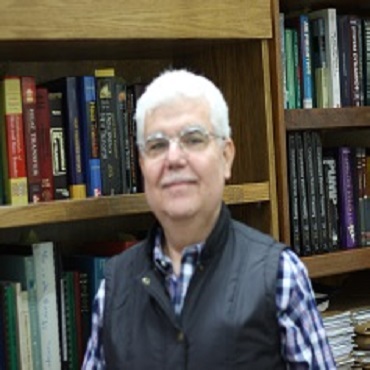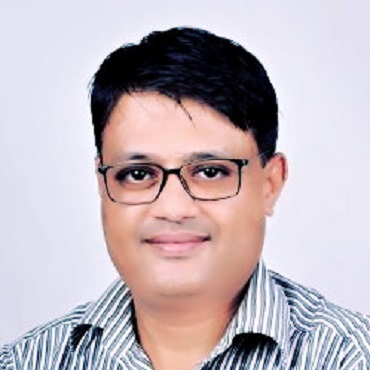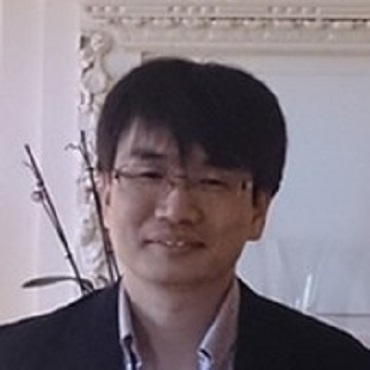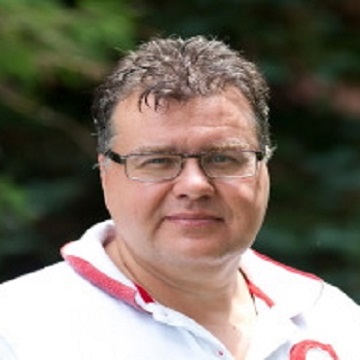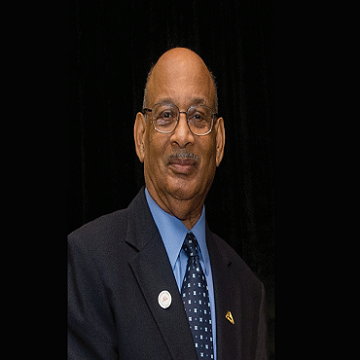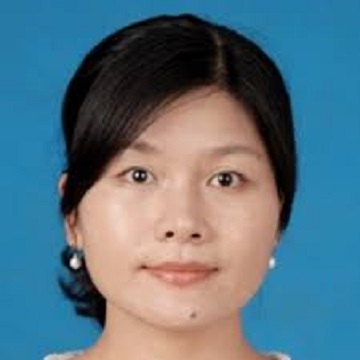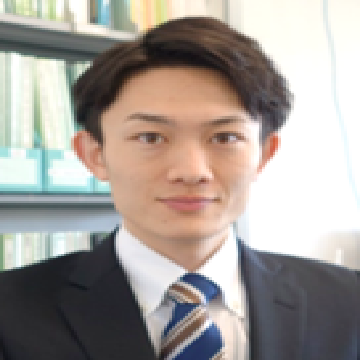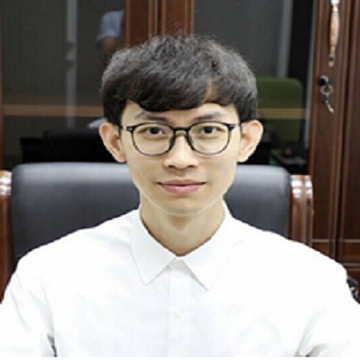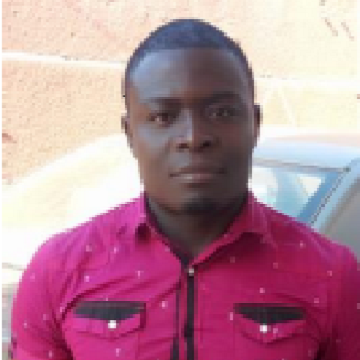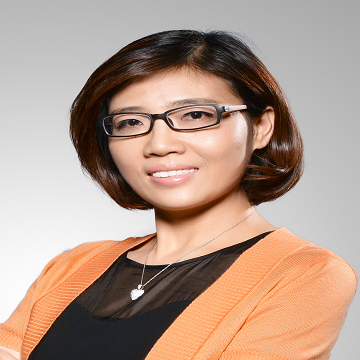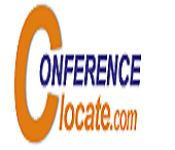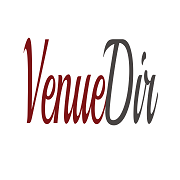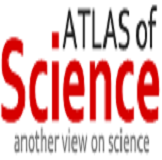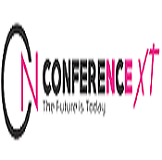
Materials Processing

Theme: Estimating future advancements to be created and the future laser marketing
International Webinar on Laser and Advanced Materials Processing that to be held on June 22, 2020 at Osaka, Japan welcomes all the participants throughout the world. This Webinar deliberates with the theme of Estimating future advancements to be created and the future laser marketing. This gives two days of vigorous talks, prompt keynote talks, oral talks, poster presentation, exhibitions, workshops by eminent people, and delegates which will create a stage for worldwide advancement of a few strategies. This Webinar aims to promote various studies and researches going on in this field among scientists, academics and industries and enhance the new systems for improvement of new materials for worldwide necessities.
This is a gathering, giving a chance to the Laser materials-processing to find out about current and upcoming issues, investigate new improvements and communicate with others with comparative premiums.
Meetings International offers a global platform for Medical, Engineering, Pharmaceutical and Healthcare Professionals to exchange ideas, knowledge and networking at 100+ Meetings International Conferences.
Session 1: Laser & Optics
Laser and Optics are well established in many manufacturing technologies, for precision delivery of intense power for scribing, cutting welding, and for precise 2D and 3D metrology. The many thousands of less powerful - but precise - lasers cutting fabrics, making patterns in glass blocks, customizing trophies and so on, really show how the laser has moved from technical marvel to common tool.
Laser Advanced Materials Processing Webinar | Laser Webinar | Material Processing Webinar | Laser Processing Webinar | Laser Advanced Materials Processing Webinar
Session 2: Advanced Laser Processing
The essential objective of this laser advance processing meeting is to give a discussion to experts in materials science, laser processing, mechanical engineering, design tools, software modelling, characterization and metrology to share and talk about the most recent advances in the field of laser-based assembling. This get-together will offer an extraordinary chance to join the exchange for the advancement and execution of cutting edge laser-based 3D producing forms.
- Laser Welding, Cladding, and Additive Manufacturing
- Laser Cleaning and Modification
- Laser Cutting and Drilling
- Laser Micro-/Nanofabrication and Ultrafast Laser Processing
- Laser Shock Peening
- Laser Additive Manufacturing
Laser Advanced Materials Processing Webinar | Laser Webinar | Material Processing Webinar | Laser Processing Webinar | Laser Advanced Materials Processing Webinar
Session 3: Advanced Optical and Magnetic Material
New electronic and photonic Nano-materials guarantee emotional achievements in correspondences, figuring gadgets, and strong state lighting. Ebb and flow research includes mass gem development, natural semiconductors, dainty film and nanostructure development, and delicate lithography alongside inquires about identified with Optics. A few of the major photonics organizations on the planet sees on various innovations and sentiments about future difficulties for makers and integrators of lasers and photonics items.
Advanced Optical Webinar | Magnetic Materials Webinar | Materials Webinar | Advanced Bio-Materials Webinar | Energy Materials Webinar | Nano-materials Webinar | NanotechnologyWebinar
Session 4: Advanced Materials & Functional Devices
Advanced Materials are at the heart of many technological developments that touch our lives. This is The Creation of Advanced Materials at the Molecular or Nuclear Measure For the reason for advancing technology, growing further effective items, making novel manufacturing technologies, or improving the human knowledge. The capacity to rapidly and dependably set out numerous conductive layers with ultrafine goals has prompted the scaling down and low cost of most microelectronic components. Functional Devices has established itself as a leader in the HVAC, Building Controls, Energy Management, Energy Savings, Lighting Controls, and Wireless industries.
Advanced Materials Webinar | Multiferroic Materials Webinar | Materials Webinar | Advanced Bio-Materials Webinar | Energy Materials Webinar | Nanomaterials Webinar | Nanotechnology Webinar
Session 5: Micro patterning and Nano processing
This special issue includes topics mainly related to semiconductor research and industry, and in addition to other research and manufacturing sectors where lithography and pattern transfer are important. Contributions are focused on the lithographic material, lithographic process, metrology, and finally on advanced etching and patterning. Contributions should be mainly concentrated in a single process/method, from the tentative list below:
- EUV, and optical lithography
- Electron and Ion Beam Lithography
- Nanoimprint Lithography including R2R nanoimprint, Soft Lithography
- Mask or template fabrication, Mask-Less Lithography, Scanning probe techniques
- Materials for Micro and Nano lithography
- Directed self-assembly
- Novel nanolithography and nanopatterning methods
- Advanced Plasma etching, Plasma ashing
- Nanometrology inspection and process control
- Lithography- etching simulation
Laser Advanced Materials Processing Webinar | Laser Webinar | Material Processing Webinar | Laser Processing Webinar | Laser Advanced Materials Processing Webinar
Session 6: Gas, solid and diode laser
Gas lasers using many gases have been built and used for many purposes. The helium–neon (HeNe) laser can be made to oscillate at over 160 different wavelengths by adjusting the cavity Q to peak at the desired wavelength. This can be done by adjusting the spectral response of the mirrors or by using a dispersive element (Littrow prism) in the cavity. Units operating at 633 nm are very common in schools and laboratories because of their low cost and near perfect beam qualities. Carbon dioxide lasers, or CO2 lasers can emit hundreds of kilowatts at 9.6 µm and 10.6 µm, and are often used in industry for cutting and welding. Solid laser covers the spectrum of solid-state lasers from materials research to applied science and design innovations.
Laser Advanced Materials Processing Webinar | Laser Webinar | Material Processing Webinar | Laser Processing Webinar | Laser Advanced Materials Processing Webinar
Session 7: Beam delivery system
For materials processing with lasers, beam delivery systems are necessary for directing the radiation from the laser head to the working point on the work piece. The more new fields of application are assumed by the laser, the greater the need for beam delivery systems which have been appropriately designed to meet the requirements of the task to be performed. Depending on the task on hand the appropriate design may be a fixed pipe with a focussing lens at its end or a six-axis articulated arm. This paper will describe the design principles and their optical and mechanical properties. The discussion of the advantages and disadvantages may be of some help in choosing an adequate delivery system.
Laser Advanced Materials Processing Webinar | Laser Webinar | Material Processing Webinar | Laser Processing Webinar | Laser Advanced Materials Processing Webinar
Session 8: Micro and remote welding
Micro Welding has been known that wavelength, power density, interaction time and material properties have great influence on processing characteristics in laser material processing, in which materials with higher reflectivity classify into difficultto- weld materials. In electronic industry, aluminum alloy is widely used as structural components due to its high specific strength, and copper became an important material because of its excellent electrical conductivity. These materials have high reflectivity and high thermal conductivity, which results in instability of energy absorption and processing results. Therefore, welding defects might be noticed in the micro-joining of aluminum alloy and copper. In this paper, the smart laser micro-welding of difficult-to-weld materials such as aluminum alloy and copper were discussed. The combination of a pulsed Nd:YAG laser and a continuous diode laser could perform high-performance micro-welding of aluminum alloy. A pulsed Nd:YAG laser was absorbed effectively from the beginning of laser scanning by pre-heating Nd:YAG laser pulse with the superposition of continuous diode laser, and wide and deep weld bead could be obtained with better surface integrity. As for micro-welding of copper material, stable absorption state could be achieved using a pulsed green Nd:YAG laser, since its absorptivity showed almost constant values with change of power density. A longer pulse duration was effective to achieve not only high absorptivity but also low deviation of absorptivity. The pulse waveform with maximum peak at the early period and a long pulse duration led to stabilizing the penetration depth with less porosity.
Laser Advanced Materials Processing Webinar | Laser Webinar | Material Processing Webinar | Laser Processing Webinar | Laser Advanced Materials Processing Webinar
Session 9: Laser detectors
Device that operates by interaction of incident radiation with semiconductor based material in order to produce an electrical signal or by other means, to interact with calorimetric devices which produce a thermally induced current. The response of the detection devices will vary by the source wavelength, intensity and energy.
Laser Advanced Materials Processing Webinar | Laser Webinar | Material Processing Webinar | Laser Processing Webinar | Laser Advanced Materials Processing Webinar
Session 10: Drilling, Brazing and Soldering
Brazing is ideally suited for joining of dissimilar metals and is performed at relatively low temperature. But even a properly-designed joint can turn out imperfectly if the correct brazing process steps are not followed. These brazing procedures boil down the brazing process to six basic steps. There are six fundamentals of brazing that every brazer should follow to ensure consistent and repeatable joint quality, strength, hermeticity, and reliability. For the sake of simplicity, we'll discuss these six brazing process steps mainly in terms of "manual brazing," that is, brazing with hand-held torch and hand-fed filler metal. But everything said about manual brazing applies as well to mass production brazing. The same brazing process steps must be taken, although they may be performed in a different manner.
soldering is a technique where a precisely focused laser beam provides controlled heating of the solder alloy leading to a fast and non-destructive of an electrical joint. The process uses a controlled laser beam to transfer energy to a soldering location where the absorbed energy heats the solder until it reaches its melting temperature leading to the soldering of the contact and this completely eliminates any mechanical contact.
Soft soldering using laser radiation is becoming more and more significant in the field of selective soldering techniques. Fast power controllability combined with a contactless temperature measurement to minimize thermal damage make the diode laser an ideal tool for this application. These advantages come into full effect when soldering of increasingly small parts in temperature sensitive environments is necessary. Laser soldering is a solution for applications that require selective solder joints such as connecting a circuit board to external terminals or for repair work.
- Laser Soldering Methods
- Diode Laser Soldering
- Smart Fiber Coupled Diode Laser
- Laser Selective Soldering
- Laser Soldering System
- Laser Melting
Laser Advanced Materials Processing Webinar | Laser Webinar | Material Processing Webinar | Laser Processing Webinar | Laser Advanced Materials Processing Webinar
Session 11: Laser device in Medical
Laser medicine consists in the use of lasers in medical diagnosis, treatments, or therapies, such as laser photodynamic therapy, photo rejuvenation, and laser surgery. After a long time of investigations and new developments in laser technology first clinical applications were performed by Choy and Ginsburg in 1983. Since that time the effectiveness of laser angioplasty in coronary and peripheral vessel is investigated in several clinical trials and first results are encouraging, so that laser is about to find its place in the treatment of cardiovascular diseases too. These advanced lasers are finding new applications in medical fields such as hair removal and skin rejuvenation procedures. Growth in the global market is also expected to be spearheaded by Diagnostic Lasers.
Medical applications:
Laser Advanced Materials Processing Webinar | Laser Webinar | Material Processing Webinar | Laser Processing Webinar | Laser Advanced Materials Processing Webinar
Session 12: Industrial application of Laser
Laser industry professionals from academic and industrial settings will gather to discuss the latest in laser additive manufacturing (LAM), laser materials macro processing, laser materials micro processing, battery and energy conversion, and laser Nano manufacturing. Topics range from the interaction between a laser beam and a material to how a process can be integrated and optimized for an application. Industrial High power applications, such as hardening, cladding, and deep penetrating welding, require multiple kW of optical power, and are used in a broad range of industrial processes. Laser welding. Laser drilling. Laser marking. Today, Industrial Laser System is apparently the most versatile instrument available for various material getting ready applications like welding, exhausting, cutting, warm treatment (hardening, reinforcing, covering, cladding et cetera.) and certain especially exceptional applications like slack of interstellar pieces, Laser changing, disengaged refinement and decommissioning of parts of unexploited nuclear foundations, laser evacuation, oil and gas examination, auto industry et cetera.
- Spectroscopy
- Heat treatme
- Lunar laser ranging
- Photochemistry
- Laser scanner
Welding and Cutting
- Laser nuclear fusion
- CDs and Optical discs
- Barcode Scanners
Surveying
- Communication
- Laser Cooling
- Spectroscopy
Laser Advanced Materials Processing Webinar | Laser Webinar | Material Processing Webinar | Laser Processing Webinar | Laser Advanced Materials Processing Webinar
Session 13: Laser Safety and environmental aspects
The International Laser Safety Conference (ILSC) is a comprehensive two-day conference covering all aspects of laser safety practice and hazard control. Scientific sessions will address developments in regulatory, mandatory and voluntary safety standards for laser products and for laser use. The Practical Applications Seminars (PAS) complement the Scientific Sessions by exploring everyday scenarios that the LSO and MLSO may encounter. Professionals in all fields and applications will find ILSC a tremendous source for information and networking opportunities.
Laser Advanced Materials Processing Webinar | Laser Webinar | Material Processing Webinar | Laser Processing Webinar | Laser Advanced Materials Processing Webinar
Session 14: Advanced Nanomaterials- production, Synthesis and Processing
Nanotechnology has found a vast number of applications in many areas and its market grown at a rapid pace in recent years. This resulted in new horizons in materials science and many exciting new developments. The supply of new Nanomaterials, form the prerequisite for any further progress in this new area of science and technology. Nanomaterials feature specific properties that are characteristic of these materials, and which are based on surface and quantum effects. The control of composition, size, shape, and morphology of nanomaterials is an essential foundation for the development and application of Nanomaterials and Nano scale devices.
Advanced Nano Materials Webinar | Multiferroic Materials Webinar | Advanced Bio-Materials Webinar | Energy Materials Webinar | Nanomaterials Webinar | Nanotechnology Webinar
Session 15: Advancement in Nanomaterials Science & Nanotechnology
Nanotechnology is the treatment of issue on a nuclear, sub-atomic, and supramolecular scale. The interesting part of nanotechnology is that the properties of numerous materials adjust when the size of their measurements approaches nanometres. Materials researchers and engineers work to understand those property changes and use them in the preparing and production of materials at the nanoscale level. The field of materials science covers the disclosure, portrayal, properties, and utilization of nanoscale materials. Nanomaterials research adopts a materials science-based strategy to nanotechnology, impacting propels in materials metrology and union which have been created on the side of microfabrication explore. Materials with structure at the nanoscale level o have remarkable optical, electronic, or mechanical properties. Albeit a lot of nanotechnology's potential still remains un-used, interest in the field is blasting.
Meetings International recognizes the commitment and amazing work in all fields of academics and research. By recognizing their contribution; Meetings International inspires and motivates scholars, researchers and academics by awarding the Best YRF and Researcher Awards in all academic disciplines and categories along with other specific awards. These awards include prestigious Certificate of Awards with other gifts.
To be eligible for the award Students interested in having their posters considered for the Materials Processing-2020 Webinar, they must have submitted an abstract of their poster to the Webinar. The award committee will consider all posters that relate to the study of public opinion, whether they focus on theory, substantive findings, research methods, and/or statistical techniques used in such research. All posters will automatically be considered for the Poster Award and the posters will take place in the Webinar venue and Poster Judges will select the best posters. The winners will be formally announced during the closing ceremony. The winners will receive a certificate award.

Materials Processing-2020 gives the opportunity to young researchers in the different field of Webinar. The best participants are selected as per their research abstract before the conference. If you are a young and dynamic researcher than you can join our Webinar to explore new idea and research. A panel of judges will select the best YRF. Best YRF will be recognized publicly at the end of the Webinar. The Best YRF Awards will be given to the most outstanding presentation presented by a participant who has registered under the student category. Undergraduates, Master students, and Ph.D. students will be considered under this category. Selection of the YRF will be made on the basis of the participant contribution in the respective research field each submission will be accepted based on the sessions of the Webinar. Irrelevant submissions will be rejected. The acceptance and rejection of abstract submissions will be selected by the committee. All submissions will go through a quality checking. Final approved abstract will consider for YRF awards.
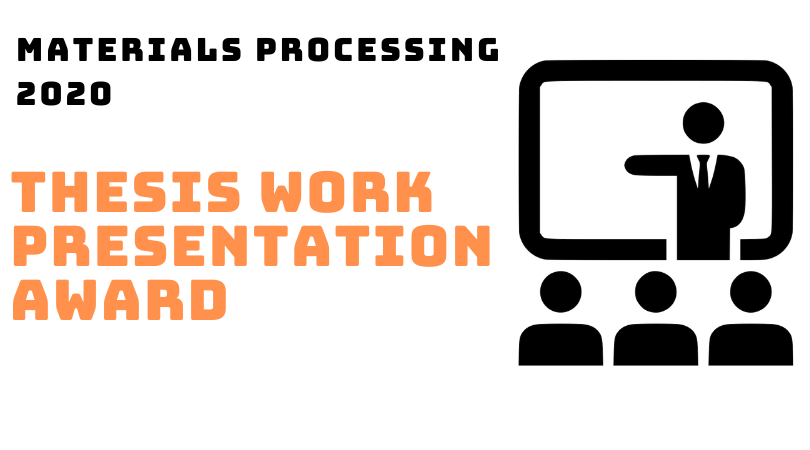
Materials Processing-2020 chooses a relevant keynote speaker to speak at Webinar. All accepted keynote speakers proposals will be considered for the Best Keynote Speaker Awards. The committee will select a number of candidates for the awards among the accepted proposals. The winner will be selected at the Webinar, taking into consideration both the proposal and the presentation. Best keynote speaker can help to boost motivation, change their way of thinking and make audience energized and inspired. For Keynote the person should be eminent or highly affiliated like Dean, Professor, HOD, Chairpersons, CEO, CFO, MD etc. Selection of the Best Keynote Speaker will be made on the basis of the participant contribution and years of experience in the respective research field. Each submission will be accepted based on the quality of abstract and conference theme. Irrelevant submissions will be rejected. The acceptance and rejection of abstract submissions will be selected by the 
Materials Processing-2020 believes in recognising our best speaker. The best speaker is selected as per their research abstract before the Webinar. All winners are determined by a selection panel. This award is designed to recognise and identify outstanding speakers who have achieved recent extraordinary eminence and success. Being an outstanding speaker means to deliver a message that engages an audience. The outstanding speaker awards will also be given on the basis of organization and professionalism of presentation, communication skills of the presenter and appropriate use of time. Each session will be evaluated separately. For speaker the person should be Professor, Researcher, Scientist, Entrepreneur etc. Selection of the Speaker will be made on the basis of the participant contribution in the respective research field. Each submission will be accepted based on the quality of abstract and Webinar sessions. Irrelevant submissions will be rejected. The acceptance and rejection of abstract submissions will be selected by the Organizing committee. All submissions will go through a procedure of quality checking by our team. Final approved abstract will consider for outstanding speaker awards.

The Organising Committee can avail in the process of managing the multiple tasks that need to be done. Committee members, having a good erudition of the event management plan, are well placed to provide training, supervision and assistance to other personnel involved in the organisation of the event. Meetings International will honour as a best OCM the individual who has demonstrated their support and guidance throughout the Webinar. OCM should be eminent or highly affiliated like Dean, Professor, HOD, Chairpersons, CEO, CFO, MD etc. Selection of the best OCM will be made on the basis of the participant contribution and years of experience in the respective research field. They must have good number of research papers and citations and should be more number of years of experience.
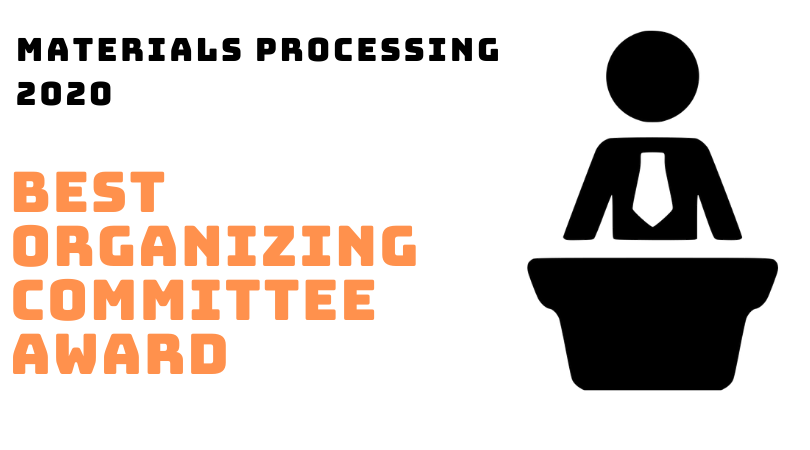
- Poster Size: Each poster should be approximately 1x1 M long. The title, contents and the author’s information should be clearly visible from a distance of 1-2 feet.
- Content: Use fonts such as Arial/Times New Roman in a reasonable font size that should be easy to read.
- The spacing between the lines should also be taken into consideration.
- A very simple format should be used representing all the details about the research carried by the author.
- Long narrated paragraphs should be avoided.
- Short phrases and bulleted points should be used in the poster to present the main highlights of the work done.
- Only abstracts submitted in English will be reviewed.
- Abstracts must not exceed 500 words (excluding the title, author affiliation and biography)
- Abstract should follow the instructions on the following template (Abstract Template).
- Do not include references or figures in the keynote abstract.
- Abstract should contain biography, photograph and short description about research
- Abstract must contain presenter name, affiliation and country
- Abstract title and abstract content should be relevant
Meetings Int. is a worldwide pioneer in delivering top notch gatherings, workshops and symposia in every significant field of science, innovation and medication worldwide receives 400,000+ online visitors with 1000+ sessions which confirm the outstanding pool of new users and visitors creating a platform to build your market place globally. Since its initiation, Meetings Int. has been related with national and global affiliations, organizations and elevated level people, committed to have world class meetings and occasions so its provide a big platform to show your product and advertise.
The explorer’s traffic is the benchmark for advertisement and the Materials Processing website is continually dragged in observer over the world. As specify by the Google Analytics, in excess of 7,622 researchers are visiting to our conference sites. Materials processinghelp you to put the spotlight on your brand by advertising with more than 9 million+ readers worldwide and about 5 million+ hits every month on our site. We provide a good opportunity to boost your business on our platform. We offer a range of eye-catching advertising spaces and branding. Researchers from significant nations including United States, Japan, United Kingdom, India, France, Taiwan, and Germany visit our conference site. Subscribers and conference attendees can be your upcoming enthusiastic customers. We maintain high quality and ethical standards in event industry, which makes us unique and better than the rest.
Advertisement banner must be provided by the advertising company and must be in the jpg or jpeg format. The banner must be of high resolution and must not have copyright infringement.
For further queries, connect our Program Manager at
laser@annualmeetings.net; contact@meetingsint.com
You can also connect us via WhatsApp: +65 3158 1626 / +44 1250 400 009
Meetings International is announcing Young Scientist Awards through International Webinar on Laser Advanced and Materials Processing (Materials Processing 2020) which is scheduled at Osaka, Japan during June 22, 2020. This Materials Processing focuses on “Estimating Future Advancements To Be Created And The Future Laser Marketing"
Materials Processing 2020 and upcoming Webinar will recognise participants who have significantly added value to the scientific community of Materials Processing and provide them outstanding Young Scientist Awards. The Young Scientist Award will provide a strong professional development opportunity for young researches by meeting experts to exchange and share their experiences at our international Webinar.
Materials Processing 2020 focuses mainly on Laser & Optics, Advanced Laser Processing, Drilling, Brazing and Soldering, Laser device in Medical, Industrial application of laser, Micro patterning and Nano processing. Materials Processing Webinar operating committee is providing a platform for all the budding young researchers, young investigators, post-graduate/Master students, PhD. students and trainees to showcase their research and innovation.
Eligibility:
Young Scientists, faculty members, post-doctoral fellows, PhD scholars and bright Final Year MSc and M.Phil. candidates. Persons from Scientific Industry can also participate.
Benefits: The Young Scientist Feature is a platform to promote young researchers in their respective area by giving them a chance to present their achievements and future perspectives.
- Acknowledgement as YRF Awardee
- Promotion on the conference website, Young Researcher Awards and certificates
- Link on the conference website
- Recognition on Meetings Int. Award Page
- Chances to coordinate with partners around the world
- Research work can be published in the relevant journal without any publication fee
Criteria:
- All presented abstracts will automatically be considered for the Award.
- All the presentation will be evaluated in the conference venue
- All the awards will be selected by the judges of the award category
- The winners of the Young Scientist Award will receive award certificate.
- The awards will be assessed as far as plan and format, intelligence, argumentation and approach, familiarity with past work, engaging quality, message and primary concerns, parity of content visuals, and by and large impression.
Guidelines:
- All submissions must be in English.
- The topic must fit into scientific sessions of the conference
- Each individual participant is allowed to submit maximum 2 papers
- Abstract must be submitted online as per the given abstract template
- Abstracts must be written in Times New Roman and font size will be 12
- Abstract must contain title, name, affiliation, country, speakers biography, recent photograph, image and reference
Conditions of Acceptance:
To receive the award, the awardee must submit the presentation for which the award is given, for publication at the website, along with author permission. Failure to submit the PPT, and permission within the designated timeframe will result in forfeiture of award.
Award Announcements:
Official announcement of the recipients will occur after the completion of Materials Processing Webinar.
- Laser & Optics
- Advanced Laser Processing
- Advanced Optical and Magnetic Material
- Advanced Materials & Functional Devices
- Micro patterning and Nano processing
- Gas, solid and diode laser
- Beam delivery system
- Micro and remote welding
- Laser detectors
- Laser device in Medical
- Industrial application of Laser
- Laser Safety and environmental aspects
- Advancement in Nanomaterials Science & Nanotechnology
- Journal of Physics Research and Applications
- Research Journal of Optics and Photonics
- Journal of Nanomaterials & Molecular Nanotechnology
11 Organizing Committee Members
15 Renowned Speakers
Evgueni Bordatchev
National Research Council of Canada
Canada
Nathaniel Quick
Laser Institute of America
USA
Guan Yingchun
Beihang University
China
Shuhei Kodama
Tokyo University of Agriculture and Technology
Japan
Soshu Kirihara
Osaka University
Japan
Hemashilpa Kalagara
Lumentum Operations LLC
USA
Steven Glover
The Laser Institute of America
USA
Jianjun Yang
Chinese Academy of Science
China
Jiajun Xu
Huazhong University of Science and Technology
China
Yanming Wu
Tsinghua University
China
Yuchao Li
Jinan University
China
Tchami Jean Hilaire
University of Ngaoundere
Cameroon
Chenhui Zhu
Northwest University
China
Elaine Y. Matsubara
University of Sa£o Paulo
Brazil
Pabitra Kumar Paul
Jadavpur University
India



